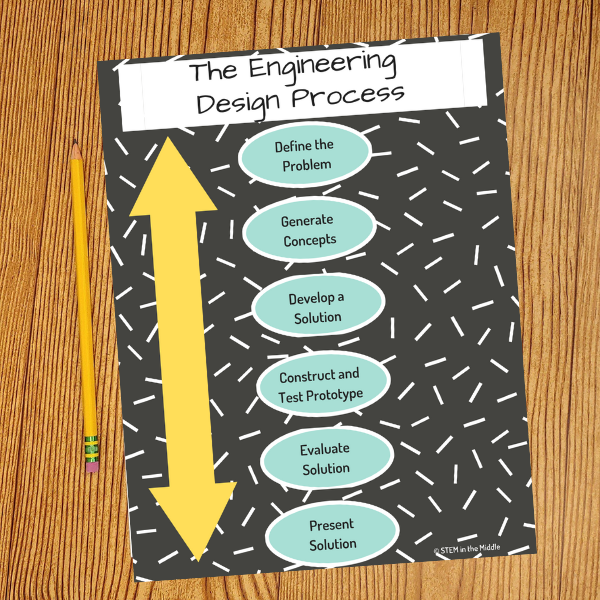Table Of Content

Finally, solutions meeting design specifications and functional requirements are productized and used to solve real-life problems. The first engineering design process step is to identify and define the problem. During the definition of a problem, the team considers the constraints such as available knowledge, finance, and resources. Users' standards improve over time, and it is important to improve the product design to adapt to their changing needs and preferences.
Product

The steps include problem solving processes such as, for example, determining your objectives and constraints, prototyping, testing and evaluation. Students are given a biomedical engineering challenge, which they solve while following the steps of the engineering design process. In a design lab environment, student groups design, create and test prototype devices that help people using crutches carry things, such as books and school supplies. As students learn about the creation of biodomes, they are introduced to the steps of the engineering design process, including guidelines for brainstorming.
FMEA - Failure Modes and Effects Analysis
Streamline it, and remove anything you feel would weigh down the project or could be achieved through simpler means. This will give you the best possible start before proceeding to the next steps. No matter which area of engineering you intend to work in, the 10 steps will always be important.
Quality Control and Assurance
This phase is characterized by meticulous planning and optimization of the manufacturing process, rigorous quality control, and strategic product launch. This stage involves creative thinking and the application of scientific principles to develop conceptual models. The process is also highly collaborative, often requiring input from a diverse set of disciplines.
Understanding the engineering design process
These will be the first tangible indications you’ll have of the quality of your solutions. Through rigorous testing, you’ll understand the strengths and weaknesses of your work. Elon Musk himself admits to spending most of his time concerned with problems and their potential solutions. Before you can begin to work on anything tangible, you need to fully understand the nature of the problem and how it will be addressed. You can either revisit some of your earlier solutions or brainstorm ideas that will eliminate the problems.
Zeppelin's Airships: Engineering Design in Action Smithsonian Voices Smithsonian Science Education Center ... - Smithsonian Magazine
Zeppelin's Airships: Engineering Design in Action Smithsonian Voices Smithsonian Science Education Center ....
Posted: Tue, 21 Aug 2018 07:00:00 GMT [source]
Brainstorm & Conceptualize
Please add your suggestions, comments, or questions on Engineering Design and development Process in the comment box. We suggest you also read this article on various types of machining operations. Afterward, the team develops working models of the solution with limited functionality. Click this link to know rapid prototyping techniques for plastic parts.
Prototypes are a key step in the development of a final solution, allowing the designer to test how the solution will work. Taking all the information and insight we gained during the previous stages of our design will translate into an actual machine or system specifically designed to solve our problem. Finishing the prototype is only half of the work since we know need to evaluate the final product and try to assess how well it will perform the task it was meant to carry out. The engineering team starts work on the detailed design of the selected solution. During this phase, the engineering team develops each block of the solution and analyzes the solution in detail.
Experts and Engineers Explain the 10 Steps of the Engineering Design Process
These features combine to create a method that produces innovative thinking and multiple solutions to complex problems. It is used to guide product development teams through the process of developing innovative ideas and nurturing those ideas to create products that solve problems for their target audience. The final step is often the validation or testing phase, where the design is rigorously evaluated against requirements. Depending on feedback, it might cycle back for further refinement or conclude if the design meets all specifications.
Engineering Design - Example Projects
They make composite material packaging containers using cardboard, fabric, plastic, paper and/or rubber bands to create four different-weight p... Students create a water bottle from common materials used in purification tools that can clean dirty water as an inexpensive alternative to a modern filter. Students may iterate upon their design based off their experiment and the designs of their classmates after initial testing. Design and construct a bridge for a local city that will have a high strength-to-weight ratio and resist collapse. Have students use their understanding of the engineering design process—and a lot of wooden craft sticks—to achieve their goals. Students design and build small doghouses to shelter a (toy) puppy from the heat—and create them within constraints.

This involves creating a detailed design that takes into account all the requirements of the project. The design should be technically sound, economically viable, and meet the needs of the market. The first step in the engineering design process is to define the problem. This involves understanding the problem, its scope, and the requirements of the project. As part of step eight in the engineering design process, you’ll need to communicate your ideas.
The TeachEngineering hands-on activities featured here, by grade band, exemplify the engineering design process. In the school lunch project, students voted on which design should be used and accommodated the most types of lunches. By communicating, students can learn to demonstrate how their design works and the reasoning behind their choices. This step helps to develop critical thinking skills and the ability to use a different viewpoint to examine a situation.
Student teams design, construct, test and improve small working models of water treatment plant processes to filter out contaminants and reclaim resources from simulated wastewater. They keep to a materials budget and earn money from reclaimed materials. Students learn more about how muscles work and how biomedical engineers can help keep the muscular system healthy.

No comments:
Post a Comment